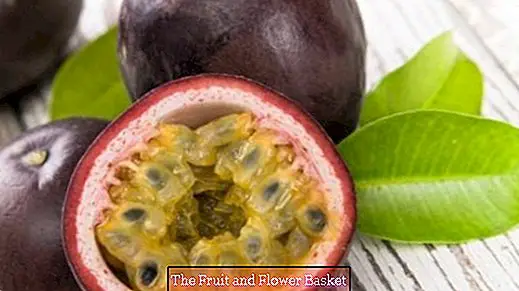The passion fruit (passion fruit) - exotic fruits
The passion fruit, originally from South America, is the fruit of a climber belonging to the genus of passion flowers. Due to its not very attractive appearance, the passion fruit is often left on the fruit shelf left. A mistake?
Considering that this fruit like no other drinks & food gives a tropical touch and is also still the purest vitamin shot, the answer is clearly: "Yes !?
Types of passion fruit
The passion fruit comes in four different ways:
- Purple Grana Dille
- Yellow passion fruit (passion fruit)
- Barbadine or Giant Grenadilla
- Curuba
However, only the first two varieties are known in Germany. But again you have to make compromises. Because the yellow passion fruit, also known as passion fruit, is not introduced too often and is therefore rarely available.
Probably the most common and well available in German supermarkets is the purple granadilla. The chicken egg-sized spherical to oval fruit owes its name to the color of its shell. If this brown-violet (purple) peel is still smooth at first, it will become wrinkled and thin in the growing ripening process. The jelly-like pulp has a green to yellowish color and is covered with numerous nuclei.
growing countries
The passion fruit is mainly grown in African countries such as Kenya, Zimbabwe and the Ivory Coast. But also in New Zealand, Australia and Hawaii, the cultivation takes place.
The passion flower, which reaches a height of several meters, is now very popular as an ornamental plant in German households due to its beautiful flowers. Their smell is perceived by some as something unusual, but not unpleasant or strong smelling.
Tips for cultivation can be found here: Forum with cultivation tips
Little information on the side: By the way, oil is extracted from the seeds of the passion flower, which in turn is processed into cosmetic products such as massage oil, sunscreen oil, etc.
Ingredients and ingredients
The healthy passion fruit contains vitamins A, B and C as well as potassium, phosphorus, iron, calcium and magnesium. In addition, the juice, if it is not heated, should have a calming effect and reduce blood pressure.
storage
For the storage of passion fruit, both storage at room temperature as well as storage in the refrigerator comes into consideration. When storing in the room temperature, however, it is advisable to consume the passion fruit within a few days. If the passion fruit is stored in the refrigerator, it can be stored for well over a week.
consumption
Due to the fact that the passion fruit does not ripen badly at all, it is advisable to make sure when purchasing that the switch already has its purple color.
If the skin begins to grow thin and slightly wrinkled and the fruit gives off a pleasant scent, then it is ready for consumption.
Wash the passion fruit well before eating. Then halve and spoon the pulp with a teaspoon. If you only want to gain the juice, a lemon squeezer is very suitable for this purpose.
The best way to enjoy the passion fruit pure. But there are also other options such as processing into ice cream, jelly or jam into consideration. Also in combination with quark the refreshing fruit is simply delicious!
taste
In the right degree of ripeness, passion fruit or passion fruit has a fully aromatic, sweet to slightly acidic taste. Before, it tastes very sour. Distantly, the passion fruit is reminiscent of the taste of a raspberry.
With this knowledge about the healthy and delicious subtropical fruit, you might not want to leave them in the fruit shelf because of their inconspicuous appearance.
Or what do you mean?





